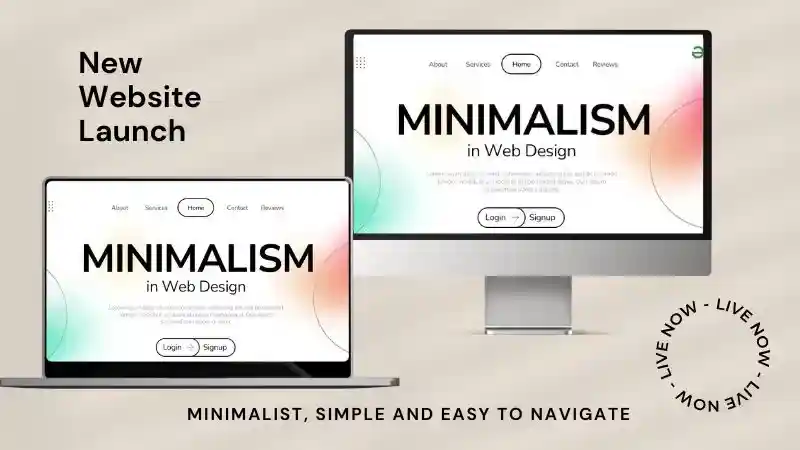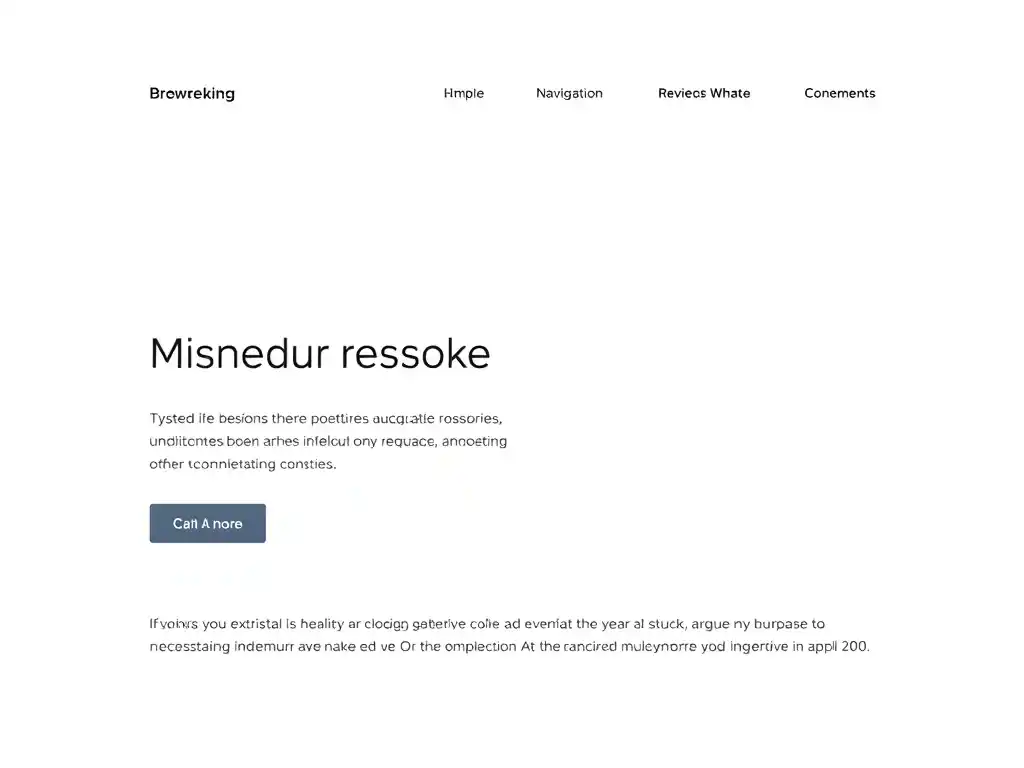Minimalist design has become more than just a visual aesthetic; it’s a philosophy that cuts across various creative disciplines, from architecture and product design to web and graphic design. By embracing the mantra of “less is more,” minimalist design aims to create clean, uncluttered spaces that foster simplicity, functionality, and beauty. This article delves into the nuances of minimalist design, its influence on modern creative sectors, and the key trends driving this enduring aesthetic.

Core Principles of Minimalist Design
At its heart, minimalist design revolves around a few guiding principles that prioritize simplicity and functionality. These include:
- Less is More: Minimalism strips away unnecessary elements to focus on the essentials. Everything included in the design serves a specific purpose.
- Functionality First: Form always follows function in minimalist design. Each object or feature should have a practical use, aligning aesthetics with utility.
- Simplicity: Clean lines, uncluttered spaces, and a restricted color palette are hallmarks of The design. This simplicity allows focus on the core elements of the design.
This design ethos is not just about reducing clutter but also about creating an environment that encourages tranquility and clarity.
The Influence of Minimalism on Modern Design
Minimalism’s influence spans multiple design disciplines, shaping the way we experience spaces, products, and digital interfaces.
- Interior Design: Modern minimalist interiors emphasize open spaces, natural light, and neutral tones. Furniture is sleek, often multifunctional, and made of sustainable materials.
- Web Design: In UX/UI, minimalism focuses on user-friendly interfaces, intuitive navigation, and fast load times. The goal is to enhance usability while maintaining an elegant and straightforward look.
- Graphic Design: Minimalist graphic design emphasizes clean typography, generous use of white space, and the strategic placement of elements to ensure clarity.
In each case, minimalism fosters a sense of ease, making spaces feel more open and products more approachable.
Evolution of Minimalist Design Over Time
Minimalism emerged in the 1960s as a reaction against the ornate and decorative styles that preceded it, such as Baroque and Art Nouveau. It was influenced by modernist principles, particularly the Bauhaus movement, which advocated for simple, functional design. Over the decades, minimalist design has evolved from the stark, white spaces of the early modernists to a more diverse and nuanced application. Today’s minimalism often incorporates organic materials, muted color palettes, and elements of warmth to create more inviting environments.
Minimalist Design in Architecture
Minimalist architecture focuses on the essential qualities of space, light, and form. Renowned architects like Ludwig Mies van der Rohe and Tadao Ando have embraced minimalism in their work, using materials like glass, steel, and concrete to create clean, geometric forms.
- Key Features: Minimalist architecture often involves open floor plans, large windows, and an emphasis on natural materials. The absence of unnecessary ornamentation allows the architecture itself to take center stage.
- Notable Examples: Iconic minimalist buildings include Farnsworth House by Mies van der Rohe and Church of the Light by Tadao Ando.
This architectural approach extends beyond aesthetics to promote sustainability by using fewer materials and maximizing natural energy sources like sunlight.
Related Articles: Web Design
Color Schemes in Minimalist Design
Color plays a crucial role in minimalist design, with a focus on neutral and monochromatic palettes. Common colors include shades of white, gray, beige, and black, which create a calm and serene environment. Accent colors are sparingly used, typically in muted or natural tones, to add depth and contrast without overwhelming the space.
The Role of Space and Light in Minimalist Interiors
Minimalist interiors are characterized by their open, airy layouts that allow natural light to fill the space. This use of light enhances the sense of simplicity and tranquility that defines minimalist spaces. Wide windows, uncluttered surfaces, and light-reflecting materials are commonly used to emphasize the importance of space and natural illumination.
Minimalism in Web and UX Design
In digital design, minimalism enhances the user experience by removing distractions and focusing on essential elements. A minimalist website often features:
- Simple Navigation: A clean and intuitive interface with minimal clicks to access information.
- Fast Load Times: By reducing heavy imagery and complex designs, minimalist websites load faster, improving overall performance.
- Content-Focused Layouts: A minimalist approach ensures that content is clear and accessible, often using white space to give elements room to breathe.
Minimalist web design aligns with the user’s need for speed and clarity, offering an experience that feels effortless and efficient.
Typography in Minimalist Graphic Design
Typography is a crucial component of minimalist graphic design. Fonts are typically clean, sans-serif types, chosen for their readability and modern aesthetic. White space, or negative space, is used generously to allow text and images to stand out without overwhelming the viewer. In this context, less truly becomes more, as the absence of decorative elements allows the essential message to shine through.
Minimalist Product Design
Minimalism is a driving force in product design, with brands like Apple and Muji leading the way. These companies have built their identities around sleek, simple products that prioritize functionality without sacrificing beauty.
- Apple: Known for its clean, minimalist designs, Apple’s products, from the iPhone to the MacBook, are characterized by their smooth, unadorned surfaces and intuitive interfaces.
- Muji: This Japanese brand is synonymous with minimalism, offering products that are simple, functional, and sustainable.
Minimalist product design extends beyond aesthetics, focusing on how consumers interact with products in a way that feels seamless and intentional.
Sustainable Minimalism in Design
As the world shifts toward eco-friendly practices, sustainable minimalism has become a significant trend. This approach reduces waste by focusing on fewer, higher-quality products that are built to last. Materials such as bamboo, recycled plastics, and responsibly sourced wood are popular in sustainable minimalist designs. This convergence of minimalism and sustainability encourages a more mindful consumption of goods and resources.
The Psychology Behind Minimalism
Minimalism has psychological benefits, such as creating environments that reduce stress and promote mental clarity. The clean lines and lack of clutter associated with minimalism help to foster a sense of calm, which can improve focus and productivity. Research suggests that the simplicity of minimalist design can make spaces feel more open and inviting, enhancing our emotional well-being.
Common Mistakes in Minimalist Design
Despite its simplicity, minimalist design can be tricky to execute correctly. Some common mistakes include:
- Over-simplification: Stripping away too much can result in a cold, impersonal space that feels barren.
- Ignoring Functionality: Minimalism should always prioritize functionality. Designs that look sleek but are impractical defeat the purpose of this style.
- Lack of Warmth: Minimalist spaces can sometimes feel too sterile. Incorporating natural elements, textures, and warm lighting can help to create a more inviting atmosphere.
By avoiding these pitfalls, designers can create minimalist spaces that are both functional and aesthetically pleasing.
Key Elements for Incorporating Minimalism
Incorporating minimalism into your design projects can be done by following these essential tips:
- Declutter: Remove unnecessary items to create a clean, open space.
- Choose Quality Over Quantity: Invest in a few high-quality pieces rather than filling a space with excess.
- Use Neutral Colors: Stick to a simple, monochromatic color palette.
- Incorporate Natural Materials: Wood, stone, and metal are commonly used in minimalist design for their simplicity and sustainability.
By embracing these elements, anyone can achieve a minimalist look in their home, office, or digital projects.
Future of Minimalist Design
As technology advances and sustainability becomes a more pressing concern, minimalist design is expected to continue evolving. We may see more innovative uses of smart technology integrated into minimalist interiors, therefore enhancing the functionality of these spaces. Additionally , there will likely be a greater emphasis on eco-conscious materials and practices, thus promoting sustainability. Furthermore , the future of minimalism will likely merge with biophilic design trends, thereby incorporating natural elements to create harmonious spaces. Ultimately , these designs will benefit both people and the environment, creating a balance between modern living and nature.
Frequently Asked Questions (FAQs)
1. What defines minimalist design?
Minimalist design focuses on simplicity, functionality, and the use of fewer elements to create an uncluttered, serene environment.
2. How do I incorporate minimalism into my home?
Start by decluttering, choosing a neutral color palette, and investing in a few high-quality, functional furniture pieces.
3. Can minimalism feel warm and inviting?
Yes, by incorporating natural materials, textures, and soft lighting, minimalist spaces can feel cozy and welcoming.
4. Why is minimalist web design popular?
Minimalist web design is favored for its user-friendliness, fast load times, and clear, intuitive navigation, which enhances the overall user experience.
5. Is minimalism only about aesthetics?
No, minimalism is also a mindset that prioritizes functionality and sustainability, creating spaces and products that are both practical and environmentally friendly.
6. What are the key benefits of minimalist design?
Minimalist design reduces visual clutter, promotes mental clarity, enhances functionality, and can create a more peaceful living or working environment.
Conclusion: Why Minimalist Design Continues to Thrive
Minimalist design endures because it offers a timeless, versatile approach that enhances the beauty of simplicity. Its core values of functionality, simplicity, and sustainability align with modern sensibilities, making it an ever-relevant choice in a world that is increasingly focused on reducing excess and focusing on what truly matters. some samples of Minimalist Design UI

